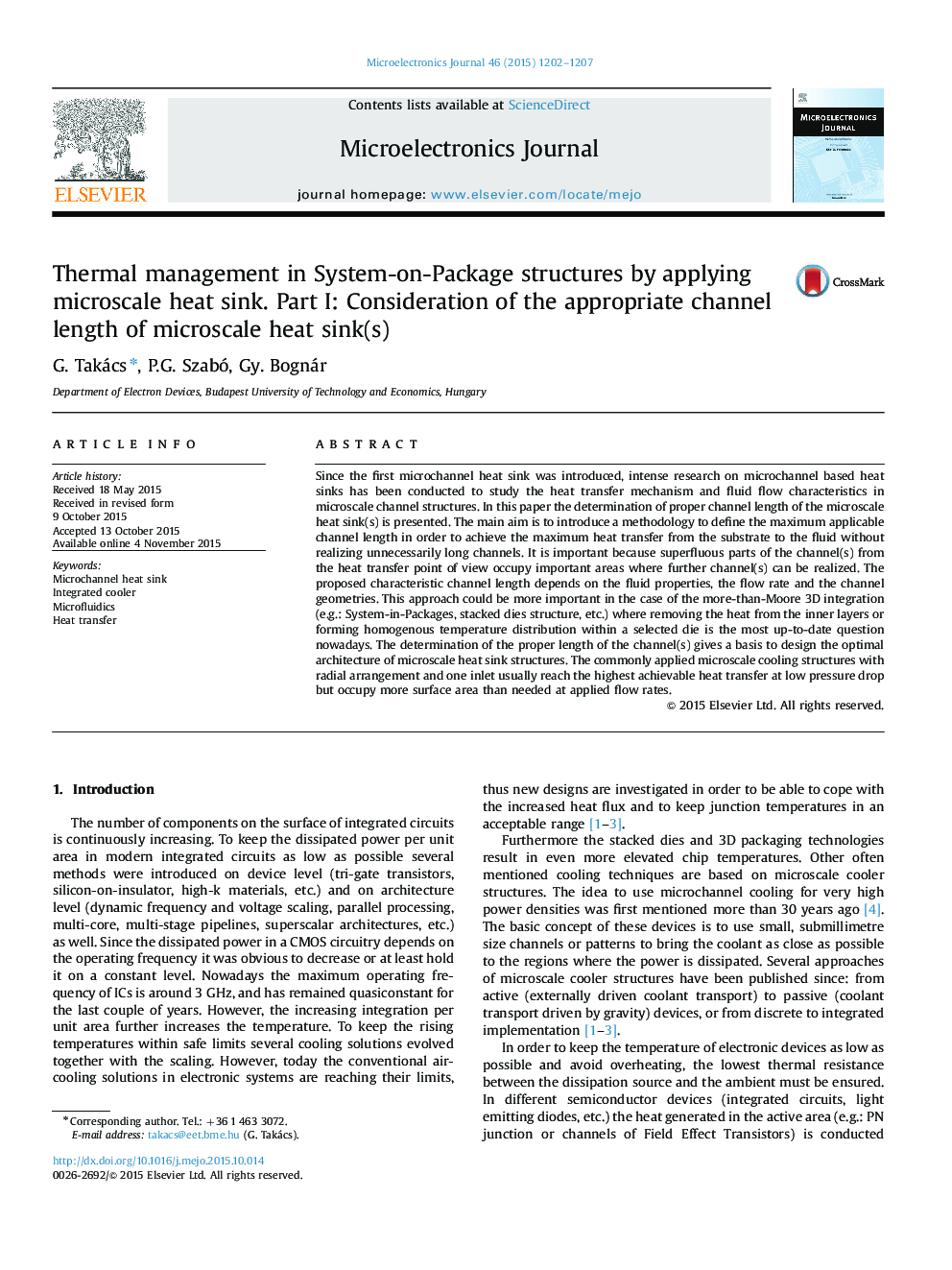| Article ID | Journal | Published Year | Pages | File Type |
|---|---|---|---|---|
| 546953 | Microelectronics Journal | 2015 | 6 Pages |
Since the first microchannel heat sink was introduced, intense research on microchannel based heat sinks has been conducted to study the heat transfer mechanism and fluid flow characteristics in microscale channel structures. In this paper the determination of proper channel length of the microscale heat sink(s) is presented. The main aim is to introduce a methodology to define the maximum applicable channel length in order to achieve the maximum heat transfer from the substrate to the fluid without realizing unnecessarily long channels. It is important because superfluous parts of the channel(s) from the heat transfer point of view occupy important areas where further channel(s) can be realized. The proposed characteristic channel length depends on the fluid properties, the flow rate and the channel geometries. This approach could be more important in the case of the more-than-Moore 3D integration (e.g.: System-in-Packages, stacked dies structure, etc.) where removing the heat from the inner layers or forming homogenous temperature distribution within a selected die is the most up-to-date question nowadays. The determination of the proper length of the channel(s) gives a basis to design the optimal architecture of microscale heat sink structures. The commonly applied microscale cooling structures with radial arrangement and one inlet usually reach the highest achievable heat transfer at low pressure drop but occupy more surface area than needed at applied flow rates.
